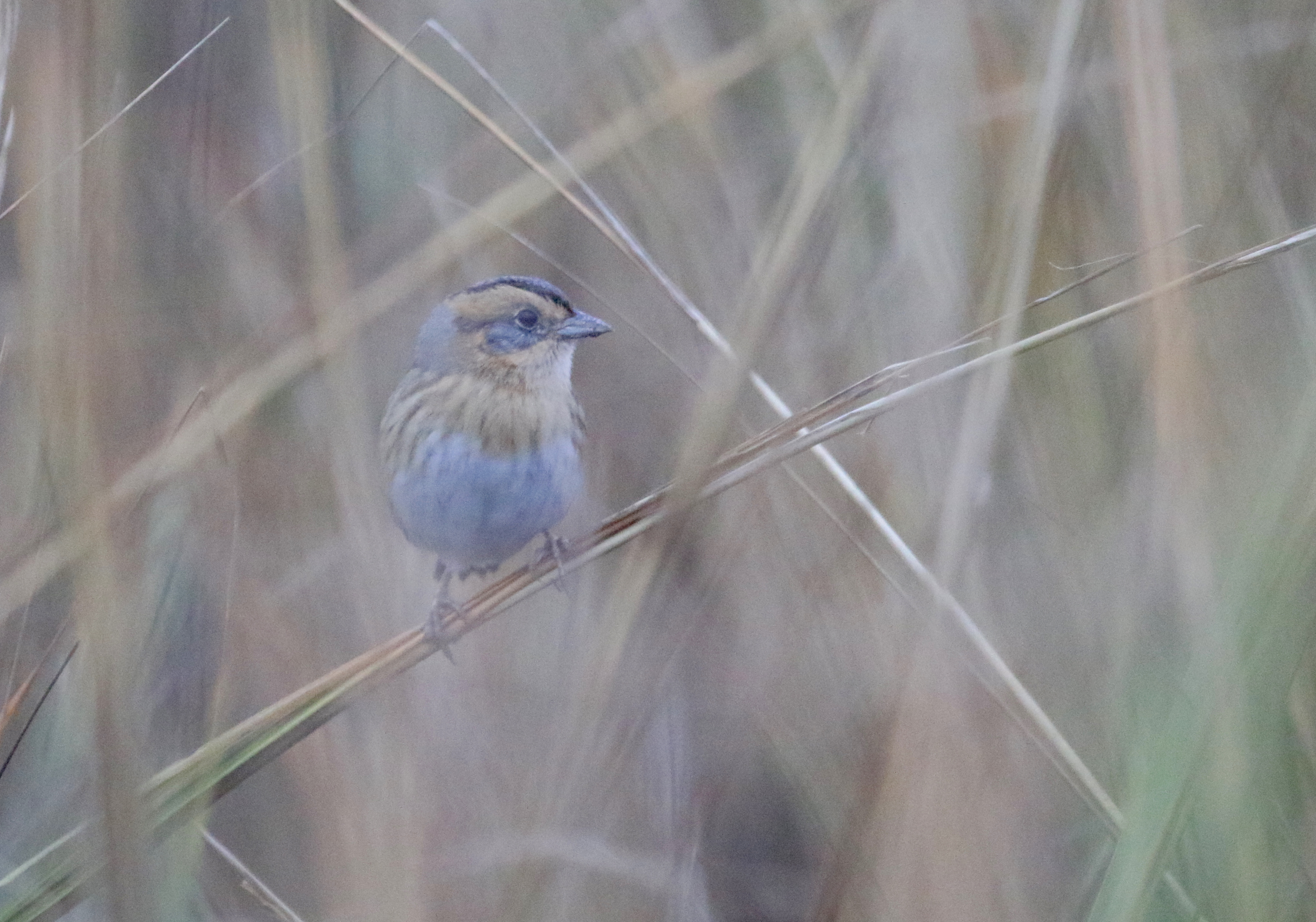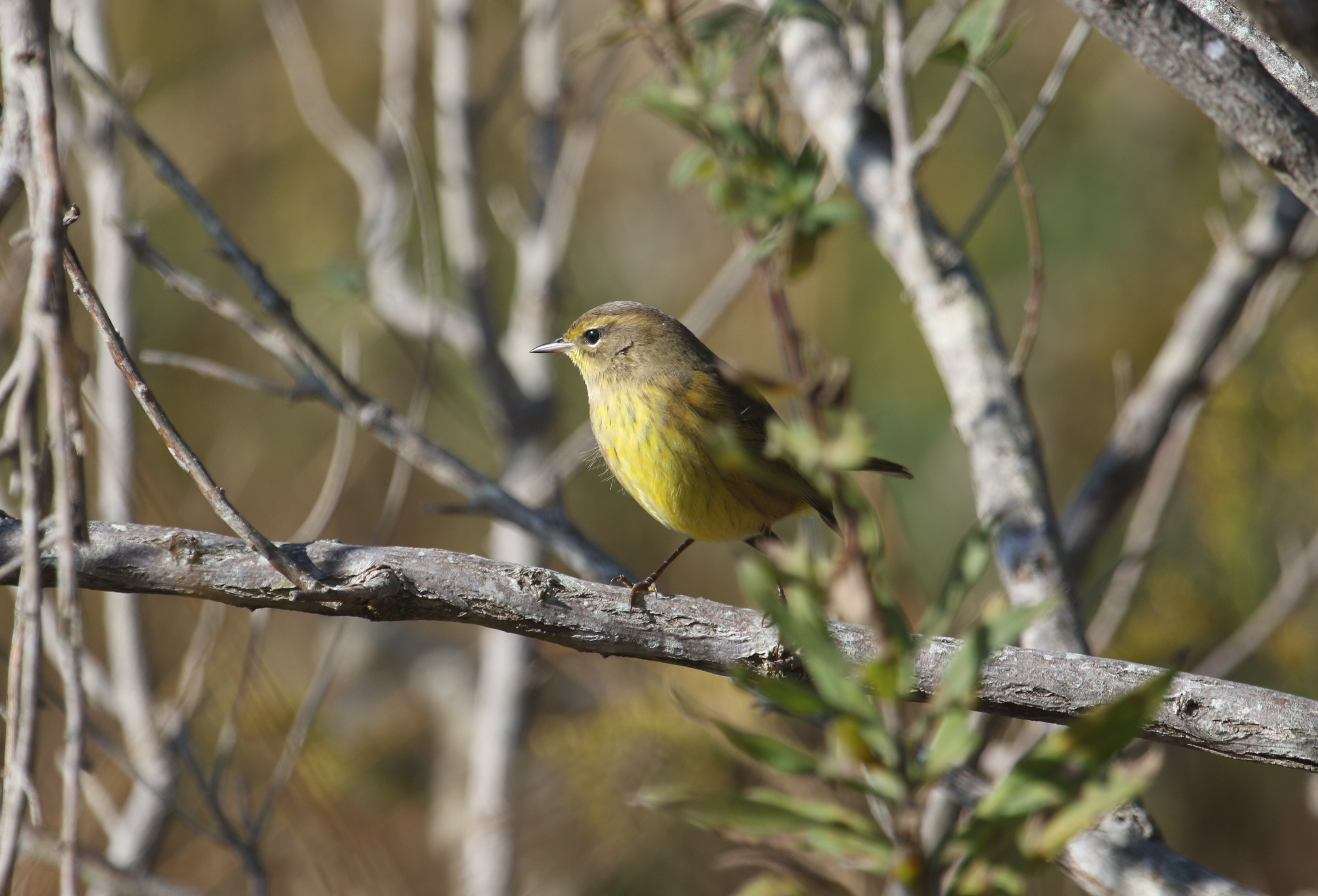I don’t remember the first time I heard about the Virginia rarity roundup, but I know I had wanted to participate last year. I couldn’t, because it coincided with the Rio Grande Valley Birding Festival in South Texas, which I was fortunate enough to attend. This November, though, I was excited to bird in this annual birding event on Virginia’s coast.
Rarity roundups are events dedicated to finding rare birds. The first ever rarity roundup was held in coastal Maryland on November 11, 2000. Since then, many other East Coast states have held rarity roundups in early November, including North Carolina, Maine, and Virginia.
Todd Day organized the first Virginia rarity roundup in Northampton County in 2002, and continued to do so on and off until 2016, when James Fox and Matt Anthony took over. The rarity roundup encourages birders to thoroughly survey Northampton County, arguably the best county for birding in the state, during November, which is prime time for vagrant birds. This sort of organized hunt is unique in that it encourages birders to cover all areas equally, including random roads, fields, and woodlands, which visiting birders usually wouldn’t give much attention to. Matt Anthony thinks it’s important to emphasize this approach to rarity finding. As he says, “obviously a rarity can turn up anywhere.” Matt also particularly appreciates the community aspect of the roundup, trying to involve teams from all over the state and organizing a “tally rally” dinner at the end of the day. This year, birders traveled from all over Virginia to participate, including teams from Northern Virginia, Charlottesville, Williamsburg, and as far away as Montgomery County.
Many great rarities have been found over the years during the Virginia rarity roundup, including white-winged dove, western tanager, western kingbird, sandhill crane, ash-throated flycatcher and Harris’s sparrow. Sparse but regular migrants such as cave swallow, golden eagle, clay-colored sparrow, snow bunting and lark sparrow are also sometimes found.
For the rarity roundup, Northampton County is split up into small territories, each of which is assigned to a team. My team, Andrew Rapp, Theo Staengl and myself, got the Eastern Shore of Virginia National Wildlife Refuge territory, which makes up the southeast corner of Northampton County.
We started at dawn at the end of the furthest south road in our territory — Ramp Road. To the south and east we looked out through the half light on expanses of salt marsh and scattered islands. A clapper rail called loudly from a nearby clump of marsh grasses. Wood ducks and mallards flew overhead. A northern harrier hunted over the marsh.
By the time it was light enough to see well, Andrew arrived, and we waded out into the salt marsh in search of sparrows and wrens. Several species of sparrows inhabit Virginia’s coastal marshes during the winter, primarily Nelson’s, saltmarsh and seaside. All three of these sparrows have an extremely annoying habit of hiding deep in the marsh grasses where they can’t be seen, then suddenly taking flight only to plop back down under cover. The difficulty in seeing them combined with the fact that Nelson’s and saltmarsh look rather similar, can make them challenging to identify. We flushed a couple of sparrows, including a Nelson’s. We also heard a marsh wren chipping. When we got back to the parking lot, we saw the first two of the many, many sharp-shinned hawks we would see that day fly overhead. Further down the road, we plunged back into the marsh, this time with more success. We managed to herd a little flock of sparrows between the three of us, and get good enough view to confirm that we had two Nelson’s and a saltmarsh. We even got photos, although they were pretty terrible.

Nelson’s Sparrow (Ammodramus nelsoni)
We birded the rest of Ramp Road, slowly making our way up to the main body of the Eastern Shore of Virginia National Wildlife Refuge. We had hooded mergansers and lesser scaup on a pond, and flocks of willets and greater yellowlegs flying over the marsh. Once we got up into a more forested area, we heard red-breasted and brown-headed nuthatches, as well as a house wren and several gray catbirds.
We drove slowly along Hallett Circle, the main road of the Refuge, listening for bird activity. The vegetation around us was dense and scrubby, perfect habitat for all manner of songbirds, including — we hoped — rare flycatchers like western kingbird or ash-throated flycatcher. We stopped and got out of the car when we encountered a large flock of yellow-rumped warblers. A gray catbird, brown thrasher, winter wren and palm warbler were all we could find mixed in. Sharp-shinned and Cooper’s hawks continued to migrate overhead in large numbers. One was almost always visible in the sky. We also saw several migrant red-tailed and red-shouldered hawks. On the butterfly trail, we had our first unusual birds of the day, a blackpoll warbler and a white-eyed vireo. Both of these are just late migrants, not the really rare birds that the roundup was targeting, but still very interesting finds. We watched them forage with palm and yellow-rumped warblers in fennel stalks for some time before continuing on.

Ash-throated Flycatcher (Myiarchus cinerascens)
We slowly birded our way up to the visitor center without anything else particularly notable. Near the visitor center we encountered a small flock of field sparrows, chipping sparrows and dark-eyed juncos, but we couldn’t find anything else mixed in. We were working our way through a song sparrow flock in front of the visitor center when Andrew said with excitement in his voice that he had an ash-throated flycatcher. Sure enough, just 30 feet away in the bottom of a tree sat the ash-throated. Andrew sent out a text alerting other birders participating in the rarity roundup to its presence, and we set about trying to keep the bird in sight until some of them arrived. Many of the birders that soon arrived did get to see the bird, although some did not, as it disappeared into a thicket of dense brush. I don’t think it was seen again after that. A migrating peregrine falcon and merlin added a few more species to our day list before we decided to leave for the next part of our territory.
We drove down the dirt road to Magothy Bay Natural Area Preserve through fields of corn stubble. We heard an American pipit calling as it flew over us, and we flushed some savannah sparrows from beside the road. We saw gadwall and a large flock of green-winged teal on Bull’s pond, as well as greater yellowlegs and a pectoral sandpiper. Then we started down a mowed path through a pine forest. Eventually, the path opened up with lots of brush and trees on one side and marsh on the other. At the end of the trail we had a good view of the bay, and we set to scanning with our scopes. We could see hundreds of birds huddled on the beach of a distant barrier island, but they were too far to make out anything but a group of oystercatchers among them. Two horned grebes dove in a channel in the marsh closer to us. Common loons, buffleheads and a surf scoter could be seen bobbing on the water in the distance. Flocks of dunlin flew by.

Palm Warbler (Setophaga palmarum)
Our final stop in our territory was Mockhorn Island Wildlife Management Area. We followed Jones Cove Drive almost to its end, where there is a little parking lot for the WMA. When we got out of the car we were immediately aware of sparrows everywhere, hopping and flying around in the dense brush on either side of the road. We scanned them thoroughly, but unfortunately, we didn’t find anything unusual. They were mostly white-throated, with some chipping, savannah and song sparrows as well as dark-eyed juncos and eastern towhees. We found a group of hermit thrushes, and were extremely surprised to see an extremely late Swainson’s mixed in with them. We began to walk down the trail away from the parking lot, where we had red-breasted nuthatch, winter wren and brown creeper. We also heard but did not see a flock of tundra swans flying overhead. We were several minutes down the trail when Andrew got a text that a Sandhill Crane had been seen flying north from the preserve immediately to our south — Magothy Bay. We rushed to an area where we could see the sky, but we could not spot the crane. Andrew received another text saying that the bird was flying low and would likely land in a field somewhere nearby. As we were driving away from Mockhorn we got another text saying someone had seen two American white pelicans flying north from south of us. We got out of the car next to a field and set up our scopes to look for them flying overhead. After several minutes and another text saying they’d been seen to the north of us, we realized we’d somehow missed them, and were getting ready to leave when my dad called that he saw the crane. This seemed a little too coincidental to be true, but he pointed out the big gray lump that was the cranes back. The field that we had chosen completely randomly for looking for the white pelicans turned out to be the same one that the crane decided to spend the night in!

Sunset by Theo Staengl
All the participating birders met at a local brewery for dinner and a “tally rally,” where we tallied all the birds that everyone had seen during the day. I don’t remember exactly what the total number was, but it was over 150 species. While I would always enjoy birding on the Eastern Shore of Virginia, it was particularly satisfying to know that every bit of Northampton County was covered by capable birders. At the end of the day, I may not have gotten to see every single rare bird that was found, but someone did, and I doubt very much that many got away unobserved. This group effort and thorough coverage is important to making Virginia’s rarity roundup a special birding event.
Special thanks to Matt Anthony for providing me with information about the history and organization of the rarity roundup.
Exciting day! Nice that you saw a sandhill crane–my personal favorite. Thanks for sharing.
Kirstin
LikeLike
Ezra,
You are beyond your years and continue to amaze. Well done Lad. Best, Doug
LikeLike
Pingback: Nelson County Rarity Roundup – Volunteers Wanted! | Birds and Buds